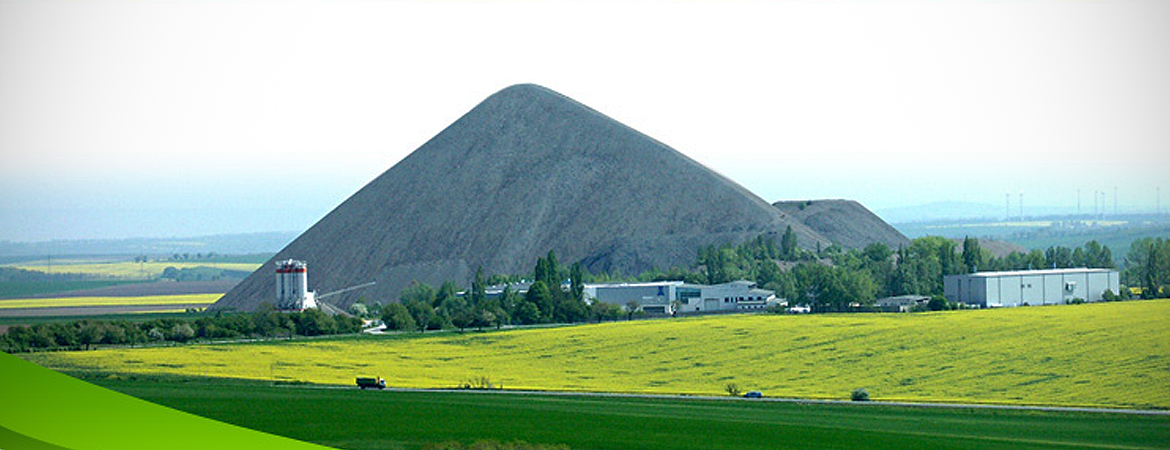All good things come to an end, and this December, the MIN-NOVATION partnership met for the last time to sum up and take stock of what has been done since the project kicked off in January 2011. Three years on, the topic of mining waste management has lost none of its importance: the European Union’s Innovation Partnership for Raw Materials has underlined recycling and re-use as one of the cornerstones of a sustainable mineral resource strategy in the years ahead. In the meantime, the partners have each kick-started a process in their countries to advance specific issues and bring stakeholders together to collaborate on improving the status quo. Apart from this, several key outputs of the project – the Final Publication, the State of the Art Compendium and the Baltic Business Database have helped showcase the cumulative experience of mining waste management and status of business development in this branch of the extractive sector.
The AGH University of Science and Technology’s Mining and Geoengineering Department – the host of the 1st MBN meeting – also led the way this time around. The significance of organizing the meeting the 1st week of December is all the greater, because it is then that the traditional Saint Barbara’s Day celebrations take place. The festive atmosphere provided the backdrop for the two key items on the MBN agenda – the study trip to see the MIN-NOVATION pilot plant in Regulice and the Waste Not, Want Not Conference.
On December 5th, the partnership travelled to Regulice, which is just outside the Kraków Metropolitan Area, to see a demonstration of the MIN-NOVATION pilot plant. Dr. Krzysztof Galos showed the guests around the facility and explained the workings of the plant, which is designed to produce aggregate from selected types of wastes which are produced as a result of the processing of hard coal. The aggregates can for example be used as filler material for certain road layers. For this demonstration, the sample waste came from the gravitational enrichment of hard coal in a washing jig at the Wujek Coal Mine. To get more detailed information about the installation as well as the quality analysis of waste sample inputs and aggregate outputs, see the newly published „Mining Waste Management in the Baltic Sea Region. Min-Novation Project” (ed. M. Cała, 2013). More research results will appear in the next issue of the AGH Mining and Geoengineering Journal (links will be posted on this website in Q1 2014.
On Friday, AGH hosted the Waste Not, Want Not – the Potential of Mining Waste in the Baltic Sea Region conference, which was designed as an opportunity to take stock of what the project accomplished, where it fell short and what type of outlook there is for future waste management initiatives. Dean Marek Cała presented his take on the importance of the project. He emphasized the durability of several outputs: the Baltic Business Database, the State of the Art Compendium and the Final Publication, but also identified several major obstacles to making waste management into a viable market. Project partners briefly shared what they considered to be the most significant steps taken during these last 3 years in their respective region.
The project set out to make mining waste management into a more visible issue and one of the highlights in this respect have been the pilot installations, which Dr. Krzysztof Galos addressed in his presentation. Meanwhile, Hanna Repo of Kainuun Etu Ltd. in her presentation chronicled the initial difficulties facing the Finnish regional meetings, and then described what type of communications and marketing approach proved successful in allowing regional and national initiatives to gather momentum.
The reality on the ground which is tied to the regional and national specificity of the legal framework and business environment cannot likewise be separated from the greater policy processes at play on the EU level. Johannes Drielsma, deputy director of Euromines, underscored the need to … Slavko Solar of the EC Directorate General for Enterprise and Industry described how the European Innovation Partnership and its priorities are connected with the specific themes that have been tackled at the regional and international meetings in MIN-NOVATION.
The conference capped off with a segment on future project proposals which seek to build on the particular issues addressed in the MIN-NOVATION project. Presentations touched on such promising topics as slope stability, inventory/assessment/classification of waste disposal sites, advances in managing post-mining areas & others. These project proposals will shortly be listed in the final newsletter of the project (see the Newsletters and Baltic Outputs section of the website).
We can only hope that just as the MIN-NOVATION project got its start with an earlier initiative European Network of Mining Regions (2005-2007), it too can be a driver of new initiatives, and the networks formed through the commitment to regional and national action enabling factors for future international work toward a safer and more sustainable mining waste management sector.


Leave a Reply